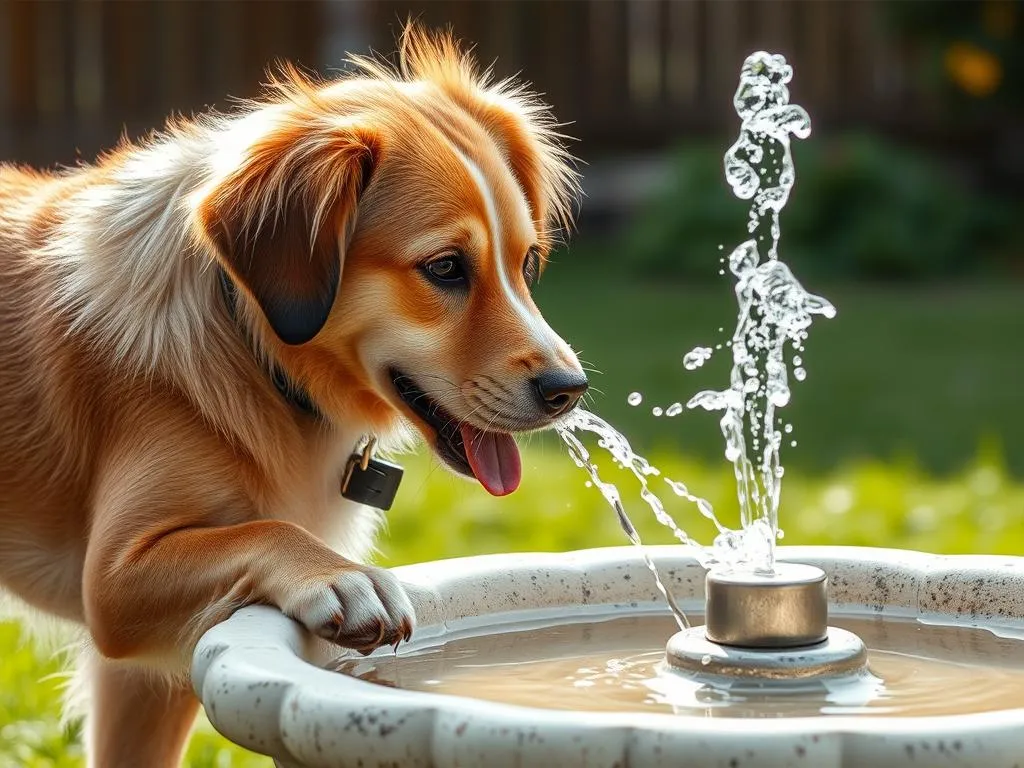
Introduction
When it comes to caring for our furry companions, dog health care is paramount. Just like humans, dogs require proper nutrition, regular exercise, and, perhaps most importantly, adequate hydration. Hydration plays a crucial role in maintaining a dog’s health, affecting everything from digestion to temperature regulation. In this article, we will explore the significance of hydration in dogs, delve into the question of do dogs need a water fountain, and provide insights into the best practices for ensuring your dog stays hydrated.
Understanding Dog Hydration
Importance of Hydration
Water is vital for all living beings, and dogs are no exception. It aids in various bodily functions, including:
- Regulating body temperature: Water helps maintain a stable internal temperature, which is especially important during hot weather or after exercise.
- Supporting digestion: Adequate hydration aids in the digestion of food and prevents constipation.
- Nutrient absorption: Water helps transport nutrients throughout the body, ensuring that your dog receives the essential vitamins and minerals they need.
Conversely, dehydration can lead to serious health issues. Some consequences of inadequate water intake include kidney problems, urinary tract infections, and, in severe cases, organ failure. Signs of dehydration in dogs can include:
- Dry gums and tongue
- Lethargy
- Loss of skin elasticity (the skin will not spring back when pinched)
- Decreased urine output
Recognizing these symptoms early can be crucial for your dog’s health.
Water Needs Based on Size and Activity
The amount of water a dog requires can vary significantly based on several factors. Size is a primary consideration; larger dogs generally need more water than smaller breeds. Additionally, other factors that affect water consumption include:
- Age: Puppies and older dogs may require different hydration levels.
- Activity level: Active dogs tend to drink more water than sedentary ones.
- Climate: Hot and humid conditions can increase a dog’s need for water.
As a general guideline, dogs should drink approximately one ounce of water per pound of body weight each day. However, individual needs may vary.
Traditional Water Bowls vs. Water Fountains
Advantages of Water Bowls
Traditional water bowls have been the standard choice for pet owners for years. Here are some advantages:
- Ease of use and accessibility: Bowls are straightforward to fill and clean.
- Cost-effectiveness: Water bowls are typically less expensive than water fountains.
- Maintenance considerations: While they require regular cleaning, bowls don’t have the mechanical components that fountains do.
However, there are drawbacks to using traditional bowls, particularly regarding hydration encouragement.
Benefits of Using a Water Fountain
Water fountains have gained popularity among dog owners for several compelling reasons:
- Encouragement of drinking behavior: The continuous flow of water can entice some dogs to drink more frequently, which can be especially beneficial for those who may not drink enough from a bowl.
- Continuous fresh water supply: A water fountain typically provides a constant supply of fresh, filtered water, reducing the likelihood of stagnation.
- Filtration and cleanliness: Many fountains come equipped with filters that help remove impurities and keep the water clean, promoting better health.
The question remains, do dogs need a water fountain? Let’s explore this further.
Do Dogs Need a Water Fountain?
Evaluating Your Dog’s Drinking Habits
To determine if your dog might benefit from a water fountain, it’s essential to evaluate their drinking habits. Observe how much water your dog consumes daily. Signs that a water fountain may be beneficial include:
- A tendency to ignore their water bowl.
- A preference for drinking from running taps or hoses.
- Signs of dehydration or urinary issues.
If your dog struggles to drink enough water, a fountain may encourage better hydration.
Health Benefits of Water Fountains
Using a water fountain can provide several health benefits for your dog, including:
- Impact on hydration levels: Dogs that drink more water are less likely to experience dehydration-related health issues.
- Possible reduction in urinary tract issues: Increased water intake can help flush out the urinary system, reducing the risk of infections and stones.
- Assisting with dental health: Some fountains are designed to promote better dental hygiene by encouraging dogs to drink more, thereby reducing plaque buildup.
When a Water Fountain is Not Necessary
While water fountains offer many advantages, there are situations where traditional bowls may suffice:
- If your dog is already drinking an adequate amount of water daily.
- For dogs with specific health conditions that require strict monitoring of water intake.
- In cases where the dog is fearful or hesitant to use new devices.
Understanding your dog’s unique needs is essential in deciding whether a water fountain is right for them.
Choosing the Right Water Fountain
Factors to Consider
When selecting a water fountain for your dog, consider the following factors:
- Size and breed compatibility: Ensure the fountain is the appropriate size for your dog. Larger breeds may require bigger bowls and higher water capacity.
- Noise level and aesthetic preferences: Some fountains can be noisy, which may deter certain dogs from using them. Choose one that fits your home environment.
- Material considerations: Fountains are commonly made from plastic, stainless steel, or ceramic. Stainless steel and ceramic are often more durable and easier to clean than plastic.
Popular Water Fountain Options
Here’s a brief overview of some popular water fountain options available on the market:
| Fountain Type | Pros | Cons |
|---|---|---|
| Plastic Fountains | Lightweight, affordable | Less durable, can harbor bacteria |
| Stainless Steel Fountains | Durable, easy to clean | Generally more expensive |
| Ceramic Fountains | Aesthetic appeal, stable | Can be heavy, more fragile |
Each option has its advantages and disadvantages, so choose one that best suits your needs and preferences.
Maintaining Your Dog’s Water Fountain
Regular Cleaning and Maintenance
Keeping your dog’s water fountain clean is crucial for their health. Regular maintenance ensures that the water remains fresh and free from bacteria. Here’s a simple cleaning guide:
- Daily: Empty the fountain, rinse it out, and refill it with fresh water.
- Weekly: Disassemble the fountain, clean all parts with soap and warm water, and rinse thoroughly.
- Monthly: Replace the filter as per manufacturer instructions.
Cleaning your fountain regularly will help maintain a healthy drinking environment for your dog.
Troubleshooting Common Issues
Even the best water fountains can encounter problems. Here are some common issues and their solutions:
- Water not flowing: Check for clogs in the pump or filter. Clean as necessary.
- Unpleasant odors: Ensure you’re regularly cleaning the fountain and changing the water.
- Noise from the pump: Make sure the fountain is filled with enough water. If the noise persists, the pump may need maintenance or replacement.
If problems continue to arise, consider consulting the manufacturer or a pet care professional for assistance.
Conclusion
In summary, hydration is vital for your dog’s overall health and well-being. Utilizing a water fountain can significantly encourage better drinking habits, leading to improved hydration levels and potentially fewer health issues. While not every dog may require a water fountain, understanding your pet’s needs and preferences will help you make the best choice for their health care.
As a responsible pet owner, ensuring your dog is well-hydrated should be a priority. Whether you choose a traditional bowl or a modern water fountain, the key is to maintain a clean and accessible source of water for your furry friend.
Frequently Asked Questions (FAQ)
How much water should my dog drink daily?
On average, dogs should drink about one ounce of water per pound of body weight each day. Factors such as activity level, climate, and diet can influence this amount.
Can my dog drink tap water from a fountain?
Yes, in most cases, tap water is safe for dogs to drink. However, it’s essential to ensure that the fountain is regularly cleaned and maintained to prevent contamination.
Are water fountains safe for puppies?
Water fountains can be safe for puppies, but it’s important to supervise them initially to ensure they understand how to use it. Ensure the fountain’s height and flow are suitable for their size.
What should I do if my dog refuses to use a water fountain?
If your dog shows reluctance to use a water fountain, try placing it near their food bowl or in a familiar spot. You can also encourage them by adding a few ice cubes or their favorite toys nearby.
By understanding your dog’s hydration needs and exploring the options available, you can make an informed decision about whether a water fountain is the right choice for their health care.









